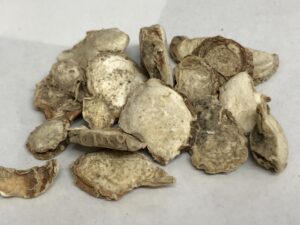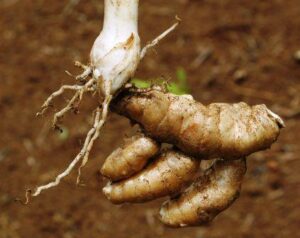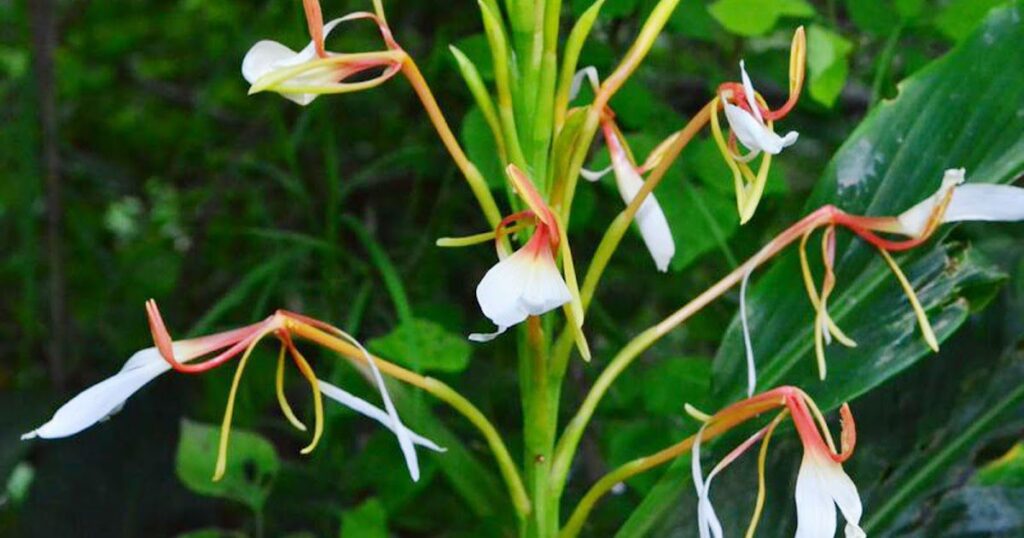Ayurvedic
Shati (Hedychium spicatum) Herb Overview
Shati (Hedychium spicatum), commonly known as spiked ginger lily, is found in the entire Himalayan region. It is a perennial rhizomatous herb, commonly found in Central and Western Himalayas at altitudes of 3500-7500 ft. Shati plant requires a rich moist soil and sunny weather. It can be grown in a sunny border as a sub-tropical bedding plant, tolerating temperatures down to -2oC.
Traditionally, the rhizomes are used in the management of respiratory disorders, fevers, hypotensive, acts as an anti spasmodic, CNS depressant, analgesic, anti-inflammatory, antimicrobial, anti asthmatic, hypoglycemic, vasodilator, antioxidant, antifungal, pediculicidal and cytotoxic activities.
Table of Contents
Scientific Classification of Shati (Hedychium spicatum):
- Kingdom: Plantae
- Division: Magnoliphyta
- Class: Liliopsida
- Order: Zingiberales
- Family: Zingiberaceae
- Genus: Hedychium
- Species: spicatum
Shati (Hedychium spicatum) Synonyms:
- English: Spiked ginger lily
- Hindi: Kapurkachari
- Bengali: Shati, Kachri, Kapurakachari
- Gujarati: Kapurkachari, Kapurkachali, Kapur
- Kannada: Goul kachora, Seena kachora, kachora, Gandhashati
- Malayalam: Katcholam, Katchooram
- Marathi: Kapurakachari, Gablakachari
- Punjabi: Kachur, kachoor, Bankela, Kachur, Banhaldi, Shalwi, Sheduri
- Tamil: Poolankizangu, Kichili Kizongu
- Telugu: Gandhakachuralu
- Oriya: Gandhasunthi
Shati (Hedychium spicatum) Description:
 a) Macroscopic: The rhizomes of Shati are 15-20 cm long, 20-25 mm in diameter. Externally it is yellowish-brown but on storage it changed to dark brown. The edge of each piece is covered by a rough reddish-brown layer marked with various scars and circular rings. The rudiments of root-lets visible, odor are camphoraceous, and taste is bitter.
a) Macroscopic: The rhizomes of Shati are 15-20 cm long, 20-25 mm in diameter. Externally it is yellowish-brown but on storage it changed to dark brown. The edge of each piece is covered by a rough reddish-brown layer marked with various scars and circular rings. The rudiments of root-lets visible, odor are camphoraceous, and taste is bitter.
 b) Microscopic: The transverse section of rhizome shows an outermost thick layer of suberised, and dark brown cells of outer cork consisting of 10-15 or more layers of irregular parenchymatous cells. The inner cork consisting of a few layered light brown, rectangular, radially arranged cells followed by a wide zone of cortex. Some cortical cells filled with flattened and oval-oblong starch grains. A thin endodermal layer present beneath cortex. The central cylinder distinguished by presence of peripheral plexus of irregular congested vascular bundles with poorly developed mechanical tissues.
b) Microscopic: The transverse section of rhizome shows an outermost thick layer of suberised, and dark brown cells of outer cork consisting of 10-15 or more layers of irregular parenchymatous cells. The inner cork consisting of a few layered light brown, rectangular, radially arranged cells followed by a wide zone of cortex. Some cortical cells filled with flattened and oval-oblong starch grains. A thin endodermal layer present beneath cortex. The central cylinder distinguished by presence of peripheral plexus of irregular congested vascular bundles with poorly developed mechanical tissues.
The vascular bundles scattered irregularly throughout ground tissue, bundles closed and collateral possessing group of two or more xylem elements. The ground tissue is composed of large parenchymatous cells with abundant starch grains and oil.
Identity, Purity, and Strength of Shati (Hedychium spicatum):
- Foreign matter Not more than 1 per cent, Appendix 2.2.
- Total Ash Not more than 8 per cent, Appendix 2.3.
- Acid-insoluble ash Not more than 2 per cent, Appendix 2.4.
- Alcohol-soluble extractive Not less than 4 per cent, Appendix 2.6.
- Water-soluble extractive Not less than 8 per cent, Appendix 2.7.
Chemical Constituents of Shati (Hedychium spicatum):
The essential oil of Shati contains beta-terpineol, limonene, beta- phellandrene, cineole, gamma-terpinene, pcymene, linalool as major constituents. The plant is rich in starch, carbonic acid and volatile oils.
Ayurvedic Properties and Action of Shati (Hedychium spicatum):
- Rasa (taste): Katu, Tikta, Kshaya
- Guna (quality): Laghu, Tikshana
- Virya (potency): Ushna
- Vipaka (taste conversion after digestion): Katu
- Karma: Grahi, Shoolhara, Kaphavataghana, Mukhashodhana
Ayurvedic Formulations made by Shati (Hedychium spicatum):
The major compositions of Shati are Agastya Haritaki Rasayana, Satyadi churna.
Therapeutic Uses of Shati (Hedychium spicatum):
Shati can be used in Vrana, Kasa, Shwasa, Rakta shodhaka, Hidhma, Maladaurgandhya, Mukhavairasya, Kandu, Chardi, Rakta shodhaka,
Dose of Shati (Hedychium spicatum):
1-3 g of the drug in powder form.
Reference:
Ayurvedic Pharmacopeia of India.
For regular health updates, Please follow our Social Pages


